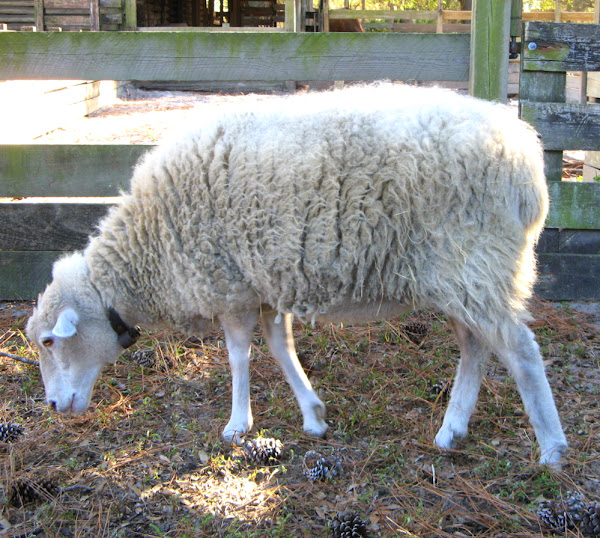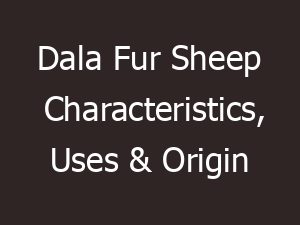The Gulf Coast Native sheep is a breed of sheep from United States. It is native to the United States bordering the Gulf Coast.
The breed is also known by some other names such as the Florida Native, Pineywoods Native, Louisiana Scrub or simply Gulf Coast sheep.
Today the breed is exceedingly rare, but is very valuable for it’s ability to adapt to the hot humid climate of the Gulf Coast.
The Gulf Coast Native sheep is actually a mix of many of the sheep varieties which populated the Southern United States during the European colonization of the region.
During the 1500’s, the Spanish sheep first arrived in Florida. The earlier population were mixed with the later importation of Spanish and other sheep breeds.
And all evolving under the strong natural selection of the native range conditions of Florida and the other Gulf Coast states.
Today a remnant of this population survives and is known as the Gulf Coast, with the population in Florida and Louisiana are often called ‘Florida Native‘ and ‘Louisiana Native‘ respectively.
Exact genetic origins of the Gulf Coast Native sheep are unknown, since a wide variety of types and breeds of sheep existed in Spain at that time.
Bloodlines of these animals can be traced back to the original proliferation of Churra sheep in the New World during the 15th century by the Spanish, and later these Criollo-type sheep mixed intermittently with the British and French sheep breeds.
Some strains may also show Tunis influence. The Gulf Coast Native sheep supplied almost all the raw wool for the Southern United States by the mid 20th century.
Currently the Gulf Coast Native sheep are listed as ‘critical‘ on the conservation priority list of the American Livestock Breeds Conservancy. And they are also included in the Slow Food USA’s Ark of Taste.
The breed is raised mainly for meat production. However, read some more information about this sheep breed below.
Gulf Coast Native Sheep Characteristics
The Gulf Coast Native sheep are relatively smaller sized animals with small sized body and a refined bone structure. Their face is usually wool free, and the legs are clean.

Their underlines are also clean. They are usually white to dark brown in color. Both rams and ewes may be either horned or polled.
Average live body weight of the mature Gulf Coast Native ewes is between 41 and 73 kg. And average live body weight of the mature rams vary from 57 to 91 kg. Photo and info from ansi.okstate.edu, The Livestock Conservancy and Wikipedia.
Uses
The Gulf Coast Native sheep is a meat sheep breed. It is raised mainly for meat production.
Special Notes
The Gulf Coast Native sheep are strong and hardy animals. They are well adapted to the hot and humid climatic conditions of the Southeast.
They are able to produce and raise at least 1 lamb per year without intensive management. And the ewes can produce lighter finished lambs in the same period as other sheep breeds.
They usually have higher live lamb production percentage and a better ratio of lambs finished to ewes mated. Generally the ewes produce 30 percent twins, 70 percent single births and rarely triplets.
Incidence of multiple births increases with good forage. The ewes are excellent mothers, and the lambs are vigorous and grow rapidly.
Along with being highly adapted to the local climates, the Gulf Coast Native sheep have well-documented resistance to gut parasites, foot rot and other diseases that commonly affect sheep.
And these valuable performance characteristics or features recommended the breed for low-input sheep production.
The breed is raised mainly for meat production, but it carry a light wool that may have some hair in it with a staple of 2.5 to 4 inches long.
These animals are very alert and have docile temperament. Review full breed profile of this sheep in the following chart.
| Breed Name | Gulf Coast Native |
| Other Name | Also known as the Florida Native, Pineywoods native, Louisiana Scrub or simply Gulf Coast sheep |
| Breed Purpose | Primarily raised for meat |
| Special Notes | Active and hardy animals, alert, well adapted to the hot and humid climatic conditions of the Southeast, able to produce and raise at least 1 lamb per year without intensive management, ewes are excellent mothers, lambs are vigorous and grow rapidly, resistance to gut parasites, foot rot and other common sheep diseases, docile temperament, very good for meat production |
| Breed Size | Small to medium |
| Weight | Mature rams weight is between 57 and 91 kg, and fully grown ewe’s body weight vary from 41 to 73 kg. |
| Horns | Yes or polled |
| Climate Tolerance | Native climates |
| Color | Usually white to dark brown |
| Rarity | Critical |
| Country/Place of Origin | United States |






